Monoline – One Line
In a world of complex compositions and layered media, sometimes the most powerful expression comes from simplicity. Monoline abstraction drawing is a minimalist yet deeply expressive technique where an entire artwork is created using a single, continuous line. This approach challenges the artist to think in terms of flow, rhythm, and spatial awareness—without lifting the pen or pencil from the page.
In this post, we’ll explore how monoline abstraction works, why it’s creatively liberating, and how to incorporate it into your sketchbook or studio practice. Whether you’re a seasoned illustrator or a curious beginner, this technique offers a fresh way to explore form, emotion, and movement.
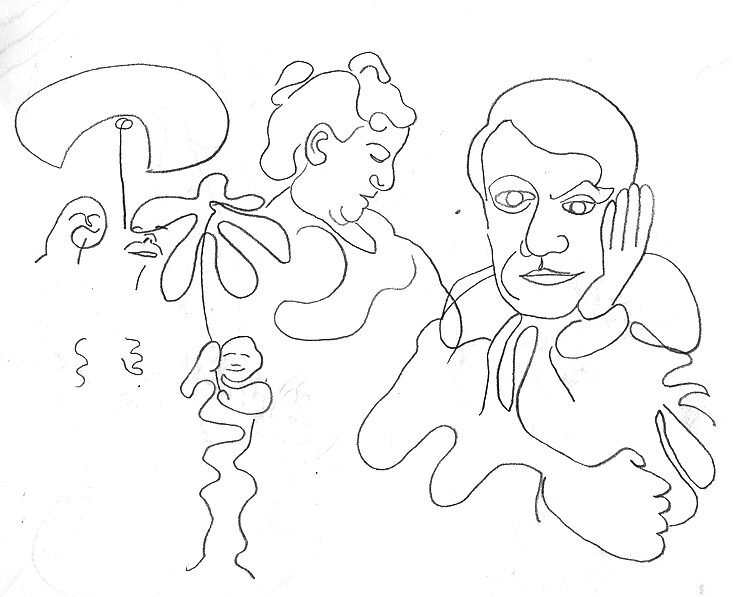
credit: JASONPOGO
What Is Monoline Abstraction Drawing?
Monoline abstraction drawing is the practice of creating an entire image using one unbroken line. The line may loop, twist, intersect, or double back—but it never lifts from the page. The result is often abstract, expressive, and full of visual rhythm.
This technique is rooted in the principles of continuous line drawing and abstract art. It emphasizes gesture, intuition, and the relationship between positive and negative space. The goal isn’t realism—it’s resonance.
Why Try Monoline Abstraction
One Line, Infinite Possibilities
Monoline abstraction is a deceptively simple technique with profound creative benefits. By drawing without lifting your tool, you commit to a continuous path—one that invites flow, intuition, and bold decision-making. This practice isn’t just visually striking; it’s mentally liberating. It encourages you to trust your instincts, embrace imperfection, and explore composition in real time.
Whether you’re warming up, breaking through a creative block, or designing for print or digital media, monoline abstraction offers a low-pressure, high-impact way to reconnect with movement and form.
Encourages Flow and Intuition
Draw Without Doubt
Because you can’t lift your tool, every mark becomes a commitment. This constraint:
- Builds confidence in your line work
- Encourages spontaneous gestures and fluid motion
- Helps you bypass hesitation and second-guessing
It’s a direct line from thought to page—ideal for reconnecting with your creative instincts.
Enhances Spatial Awareness
Think Ahead, Move With Purpose
Monoline drawing requires you to plan your path as you go. This sharpens your ability to:
- Visualize composition dynamically
- Balance positive and negative space
- Navigate overlaps, loops, and intersections with intention
It’s like solving a puzzle while you draw—engaging both your analytical and intuitive sides.
Reduces Overthinking
Movement Over Measurement
Monoline abstraction is a powerful antidote to perfectionism. With no erasing or backtracking, you’re free to:
- Focus on rhythm and gesture
- Let go of technical constraints
- Embrace mistakes as part of the design
This makes it an excellent warm-up exercise or creative reset.
Creates Visually Striking Results
Unity, Motion, and Modern Appeal
The uninterrupted line creates a sense of cohesion and energy that feels both modern and timeless. Monoline designs are:
- Ideal for prints, tattoos, and surface design
- Easy to digitize and reinterpret across media
- Visually bold, even when conceptually simple
They carry a graphic elegance that resonates across styles and audiences.
Sketchbooks.org | VISUAL RESEARCH HUB
Monoline Abstraction Drawing Examples
Visual research is critical for any creative endeavor. We have compiled specialized links to lead you directly to images, videos, and inspiration for "Monoline Abstraction Drawing Examples" across the web's best visual search platforms.
Tools and Materials for Monoline Drawing
Equip Yourself for Flow and Precision
Monoline drawing thrives on simplicity—but the right tools can elevate your experience from casual sketching to intentional design. Whether you’re working traditionally or digitally, choosing materials that support uninterrupted motion and clean execution will help you stay in the zone and make the most of each line.
This guide breaks down essential tools and surfaces to support your practice, from expressive warm-ups to polished final pieces.
Drawing Tools
Choose the Right Instrument for Your Intent
The tool you use shapes the character of your line—its weight, texture, and fluidity. Here are some top choices for monoline work:
- Fineliner Pens or Technical Pens
Ideal for crisp, consistent lines. These pens offer precision and control, making them perfect for intricate loops, geometric paths, or clean abstractions. - Brush Pens
Add expressive variation in line weight while maintaining fluid motion. Great for stylized monoline work that leans into gesture and rhythm. - Ballpoint Pens
Smooth and reliable, ballpoints glide effortlessly across the page. Their subtle pressure sensitivity allows for nuanced line variation without breaking flow. - Digital Stylus and Tablet
Perfect for experimentation. You can undo, layer, and test variations without fear. Many apps offer pressure control and vector smoothing, making digital monoline drawing both forgiving and versatile.
Surfaces
Support Your Line with the Right Canvas
The surface you draw on affects how your tool behaves—its glide, absorption, and clarity. Choose based on your goals:
- Smooth Sketchbook Paper (100–150 GSM)
Great for everyday practice. The smooth texture supports clean lines and reduces drag, while the weight prevents bleed-through. - Bristol Board or Marker Paper
Ideal for finished pieces. These surfaces are ultra-smooth and designed to handle ink with minimal feathering, making them perfect for high-contrast monoline designs. - Digital Canvas
Offers infinite flexibility. You can layer, recolor, and refine your work with ease. Digital canvases are especially useful for creating printable designs, animations, or stylized reinterpretations.
How to Start a Monoline Abstraction Drawing
One Line, One Journey
Monoline abstraction is a practice in presence and flow. It invites you to draw without lifting your tool, creating a continuous path that loops through intention, accident, and discovery. The process is meditative, expressive, and often surprising. Whether you’re warming up, exploring emotion, or designing for print, this technique offers a low-pressure way to reconnect with movement, rhythm, and visual storytelling.
Step 1: Choose a Starting Point
Let the First Mark Lead
Begin anywhere on the page—center, edge, or corner. There’s no “correct” place to start. That first mark sets the tone for everything that follows, so trust your instinct. A central starting point might radiate outward like a mandala, while a corner start could spiral or meander across the page.
- Don’t overthink it—just begin
- Consider how your starting point affects flow and direction
- Let your hand respond to the space, not control it
Step 2: Set a Loose Intention
Direction Without Detail
Before you draw, decide loosely what kind of image you want to create. It could be:
- A stylized portrait
- An abstract object or landscape
- A purely non-representational pattern
You don’t need a detailed plan—just a sense of direction. This helps guide your choices without locking you into rigid expectations.
Step 3: Begin Drawing Without Lifting
Commit to the Line
Let your pen or stylus flow across the surface. Loop, curve, zigzag, spiral—whatever feels natural. The key is to never lift your tool. If you need to cross over or double back, do so with intention. This constraint builds rhythm and unity.
- Vary your speed to shift energy
- Use repetition to create texture or emphasis
- Let the line respond to your mood or music
This is where intuition takes over.
Step 4: Embrace Imperfection
Let Mistakes Become Motifs
If you make a “mistake,” don’t stop—incorporate it. Monoline abstraction thrives on unpredictability. A stray loop might become a flower. A jagged turn might suggest motion. The organic evolution of the line is part of its charm.
- Resist the urge to edit or erase
- Let the drawing surprise you
- Celebrate the quirks—they’re what make it yours
Step 5: Finish with Contrast or Color (Optional)
Add Depth and Mood
Once your linework is complete, you can enhance it with:
- Color blocks to highlight areas or create rhythm
- Shading to suggest form or light
- Digital overlays for layering, texture, or animation
These additions can shift the tone of your piece—playful, moody, vibrant, or serene. Or leave it as-is and let the line speak for itself.
Creative Variations to Explore
Push the Boundaries of the Line
Once you’ve mastered the basics of monoline abstraction, it’s time to play. These creative variations invite you to stretch the concept—adding layers of challenge, emotion, and design. Whether you’re seeking spontaneity, thematic depth, or visual complexity, these approaches offer fresh ways to engage with the medium and evolve your style.
Blind Monoline Drawing
Heighten Intuition Through Sensory Play
Close your eyes or avoid looking at the page while drawing. This forces you to rely on touch, rhythm, and muscle memory rather than visual control. The result is often raw, expressive, and surprisingly cohesive.
- Builds trust in your instincts
- Encourages fluid, uninterrupted motion
- Great for warm-ups or emotional release
Blind drawing strips away expectation and invites pure mark-making.
Themed Monoline Series
Explore Depth Through Repetition
Choose a theme—faces, plants, architecture, emotions—and create a series of monoline drawings around it. This helps you:
- Develop consistency and visual rhythm
- Discover variations within constraint
- Build a cohesive body of work for display or portfolio use
Series work encourages refinement and storytelling through form.
Monoline with Negative Space
Carve Contrast with Intentional Gaps
Use your line to define shapes by what’s missing. Leave gaps, voids, or unconnected areas to create tension and visual intrigue.
- Adds contrast and breathing room
- Highlights focal points through absence
- Encourages thoughtful composition
Negative space becomes part of the narrative, not just background.
Layered Monoline
Build Depth Through Overlap and Color
Draw multiple monoline forms on top of each other using different colors, opacities, or line weights. This technique adds:
- Dimensionality and movement
- Opportunities for color play and mood shifts
- A sense of complexity without clutter
Layering transforms simple lines into rich visual tapestries.

Sketchbooks.org | FEATURED ARTISTS
Mawltea and the Anatomy of the Absurd
An Introduction to the Inventive Mind of mawltea The digital gallery floor has opened on the collected works of mawltea, an artist whose profile hints at a whimsical, slightly self-deprecating approach: "freezing in Oslo, Norway"...
Frequently Asked Questions
What is monoline abstraction drawing?
It’s a drawing technique where the entire artwork is created using one continuous, unbroken line.
Do I need to plan my drawing in advance?
Not necessarily—many artists let the line evolve intuitively, though a loose intention can help guide the flow.
What tools are best for monoline drawing?
Fineliners, brush pens, or digital styluses work well—anything that allows smooth, uninterrupted motion.
Can I use this technique for portraits or figures?
Yes, monoline abstraction can be applied to any subject, including faces, bodies, and objects.
Is it okay to cross over the line?
Absolutely—overlapping and intersecting lines add complexity and rhythm to the composition.
How do I avoid getting stuck or boxed in?
Keep your hand moving and trust the process. If needed, spiral outward or loop back to open areas.
Can I add color or shading afterward?
Yes, many artists enhance monoline drawings with color blocks, gradients, or digital effects.
Final Thoughts
Monoline abstraction drawing is a celebration of simplicity, spontaneity, and flow. It invites you to let go of perfection, embrace the unexpected, and trust your creative instincts. With just one line, you can express movement, emotion, and form in ways that are both minimalist and deeply personal.
So grab your pen, pick a point, and start drawing. Don’t lift. Don’t overthink. Just follow the line—and see where it takes you.
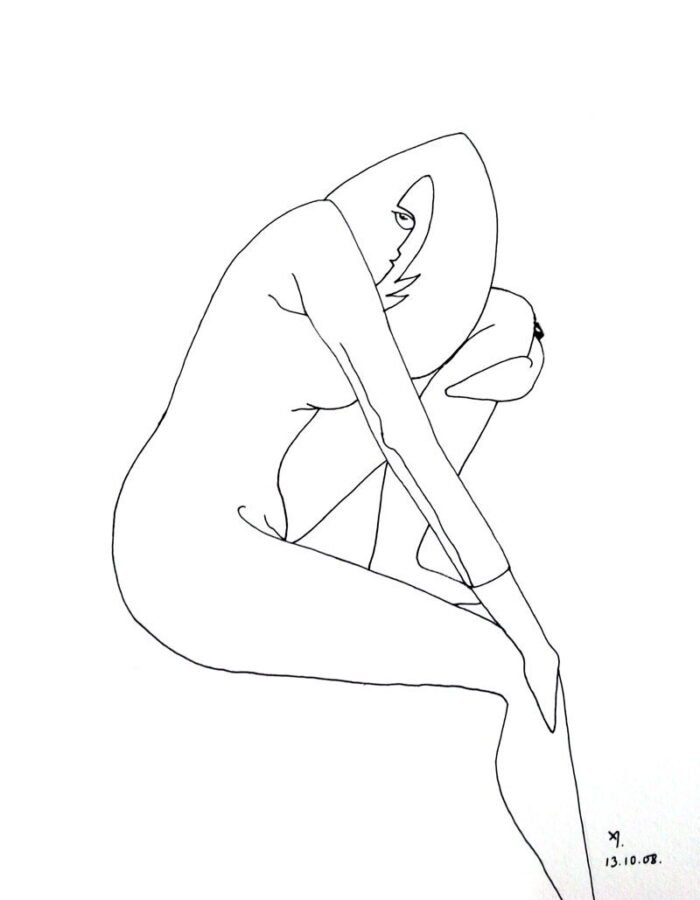
credit: SHARANYA
Ready to Share Your Work?
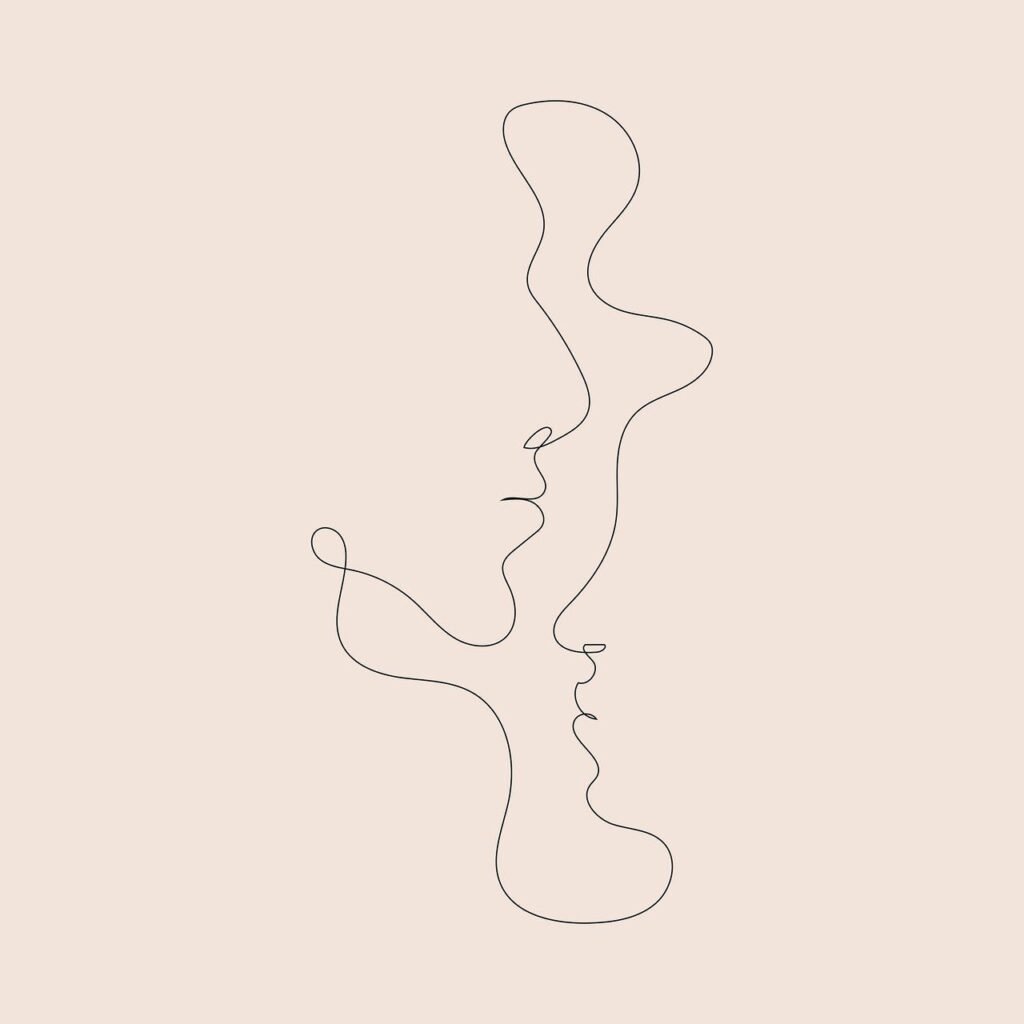

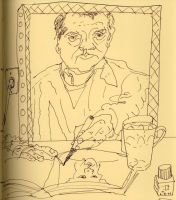

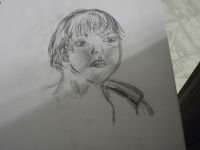
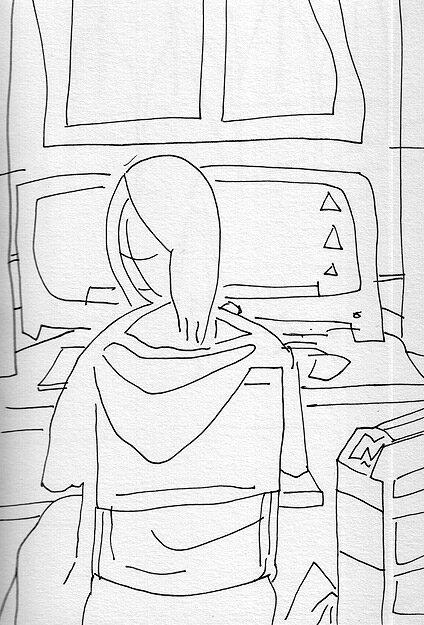
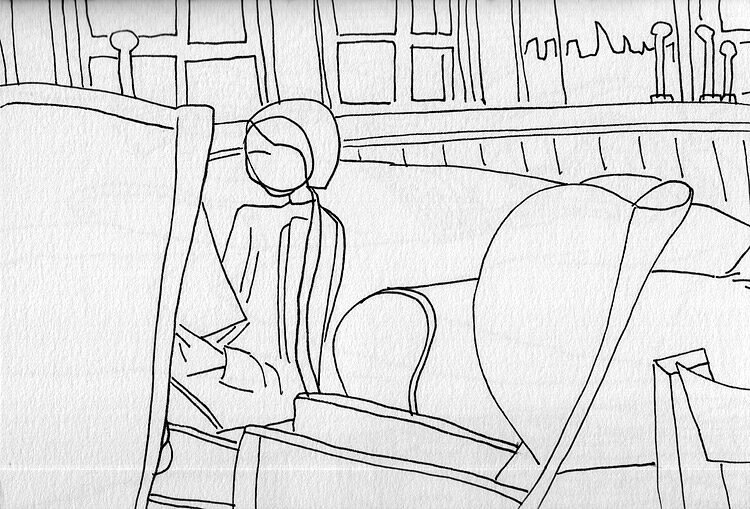
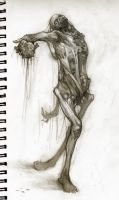

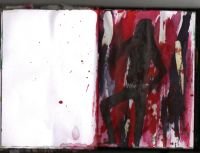


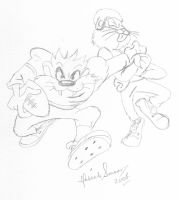

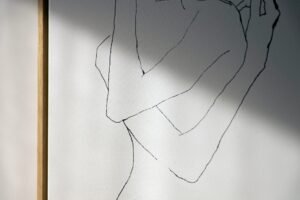
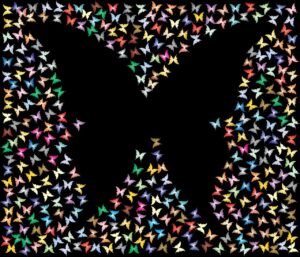
The shapes I make are unexpected—and beautiful while being guided by design.
Drawing without lifting the pen = total flow state.